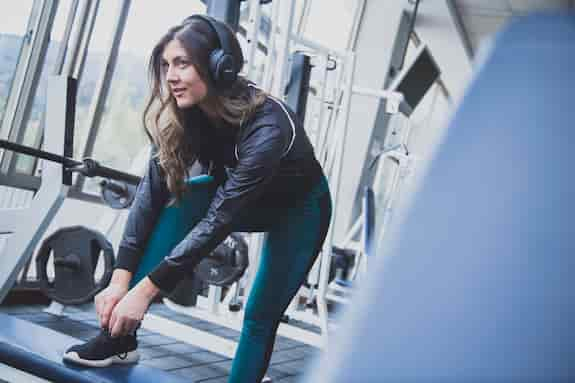This form of exercise influences our future health and longevity more than any other type of physical activity.
A study on nearly 100,000 adults has found that higher-intensity activity provides more health benefits and longer life than low-intensity physical activity.
According to physical activity guidelines, adults should be active and move more during the day.
They should do at least 150 to 300 minutes of moderate-intensity exercise, such as brisk walking, or 75 to 150 minutes of vigorous intensity exercise, such as running during the week.
For further health benefits, adults should undertake muscle-strengthening exercises such as cycling at least two days a week.
Past studies have suggested that moderate-to-vigorous-intensity exercise is much better for health compared to light activity.
Nevertheless, there was not enough evidence to say if engaging in more vigorous-intensity exercise is healthier.
Consequently, this study looked into the idea if doing more vigorous-intensity activity reduces mortality risk.
For a week the participants wore an activity tracker on their wrist so the intensity of their movement and its duration was recorded.
Then the research team calculated the energy used during body movement, which is known as physical activity energy expenditure (PAEE).
They also calculated the percentage of vigorous-intensity activity from the total volume of activity.
They found that using more energy of any type of activity resulted in a lower death risk over the three year follow-up.
For example, during the follow-up period, participants with a PAEE of 30 kJ per kg per day had a 50 percent lower chance of dying than those who had a PAEE of 15 kJ per kg per day.
The moderate intensity exercise in this case was 10 percent of the total volume.
This 10 percent is equal to an hour strolling plus walking briskly for 35 minutes.
Dr Tessa Strain, the study’s first author, said:
“Our results show that doing more activity of any intensity is beneficial, but that expending those calories in more intense activity is better still.
By gradually building up the intensity of physical activity we do each day we can improve our future health.”
Dr Søren Brage, study co-author, said:
“Our research shows how the use of wearable devices capable of measuring physical activity in large cohorts can help disentangle the roles of volume and intensity of activity in influencing future health.
The availability of data from nearly 100,000 participants in UK Biobank, backed up by a series of validation studies, allowed us to compare the impact of activity intensity in groups with similar overall volumes of physical activity, and demonstrate that more intense physical activity has health benefits beyond just contributing to total activity volume.
Our results also show that activity volumes accumulated almost exclusively through light activity could still halve the mortality risk.
Taken together, this means that there are several different pathways to maintain good health and people can choose the path that works best for them.”
The study was published in the journal Nature Medicine (Strain et al., 2020).

